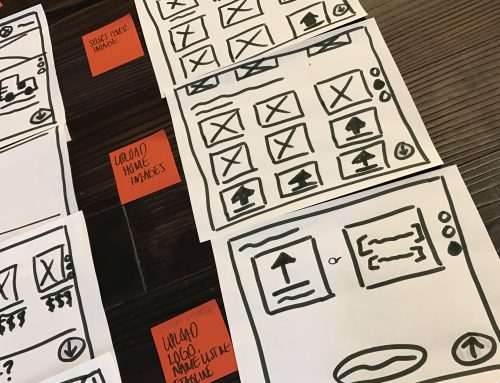So you hired someone to do your UX, you dutifully created personas, ran focus groups, built wireframes, made a pretty visual design and launched your product. People are signing up and sound happy. Good! But what you’re not hearing is what the people who clicked away from your website think of it. If you only look at the data from existing users, then you’re missing 50% of your market — the users who were unhappy.
Here are some primary issues that cause users to walk away from you, and you’ll never hear about it from them. (But if you had a Customer Experience Director you would.)
5 Factors
1. Understanding When and Where your Customers will be Using your Product Makes All the Difference
The biggest mistake is not understanding where and why a customer will use your application. You’ve probably made assumptions about this. And most likely those assumptions are wrong. In fact, the main reason startups fail is because they stick to their initial market, business plan and assumptions that they had when they started out. The ones that survive, managed to get the message about how a customer wanted to use their product, and they made those changes. This is the almighty pivot.
Are customers making fast use of your app in their car while stopped at a light? Have you tried to use it that way?
Do they take your app to the grocery store and to check products and prices on the go?
Are they using your online version as a To Do list as well as an email client?
Remember, don’t try to stop customers from doing what they do, and don’t think you can change their behavior. Instead, follow their lead. Figure out what they want, and give them that–even if it takes you far from where you thought you’d be going when you founded the company. Misuse is an opportunity to change directions and grab a larger market share. Look for those opportunities.
2. Branding is Usually Wrong
It’s surprising to me how many people don’t get branding right. Branding is NOT your logos and your colors. It is not your visual design. It is who you are and what you do. The logo and design are merely psychological triggers that remind your customers of who you are and and what you do. But you can’t remind them if they never knew to begin with.
It’s not complicated. When someone lands on your home page, tell them what you do. If they don’t get it in 30 seconds, they’re gone. They won’t ever come back. This is not the time to hide the ball, be “creative” or make assumptions.
If your landing page doesn’t answer this question
“What do we do?”
With this answer:
” We
[make, help, build, sell] this.”You have failed. Nobody will dig into your case studies, press releases, or “Who We Are” if they can’t figure out what you do right off the bat.
3. More Features Make Investors Happy, but Not Users
I’ve heard many a CEO tell me that they have a fast iteration because their investors like it when they release a new feature. I get it, investor are god. But here’s the thing, investors might think you’re building your company because you’re building your product. But unless your building your user-base, your business is failing. Eventually, investors catch on.
Here’s the other thing: users hate new features. Yes, they do. Every now and then, you’ll release a feature (likely one the users have been pestering you for) and users will be thrilled. Think copy and past on the iPhone. But by and large, most features you release users will hate. You will interrupt their work flow with your announcement of the new feature. You will send them multiple emails about the features that they’ll have to throw away. You’ll change the menu so they lose track of a process they already learned. You’ll at some point try to force the new feature on them, which will make them quit the application in anger.
Ninety-five percent of new features are bad. Teach your investor that lesson, by releasing sales reports more frequently than new feature reports. That’s how to really keep your investors happy.
4. Customer Service Can Poison a Good User Experience
How many times have you had to break down and contact customer support about an issue with an application? We all hate it. And here’s why: customer support is slow, painful, condescending and half the time fruitless. How did it get this way? Why would we all rather wade through the knowledge base and newsgroups to find the answer ourselves? That’s a question for another post. But here, I will tell you that if you’re support isn’t fast, friendly and helpful, you’re undoing in one phone call what you spent months doing with marketing, PR, product development and sales. One rude person on the phone will destroy any good will you’ve built up with your customers.
And don’t forget that one angry customer = 1,560 people who will hear about your crappy service!
The good news? It’s fixable. If someone reaches out (via Twitter, Facebook, or another phone call) and is polite, friendly and helpful, customers will assume you just have one bad apple. So think in terms of customer experience, not just user experience.
Who is in charge of that in your company?
5. Signing Up and Signing On or How to Lose 50% of Your New Customers
What circus tricks do you require before you’ll let a new customer buy your product? Do they have to fill in a long form? Do they have to give up personal information? Do they have to share their address book? Or read an impossible to read Captcha and answer 5 security questions?
Would you do this in a brick and mortar store? The sad thing is, we often let our IT security guys throw huge walls in front of customers when what we should be doing is politely inviting them in and offering the online equivalent of warm chocolate chip cookies.
Take a look at the logs of users who abandoned your website or app during the sign-in/sign-up process. Now take a deep breath, and then get your customer experience director working on making that experience better. You’ll be amazed at how many new users you’ll have once you open your doors and invite them in.





